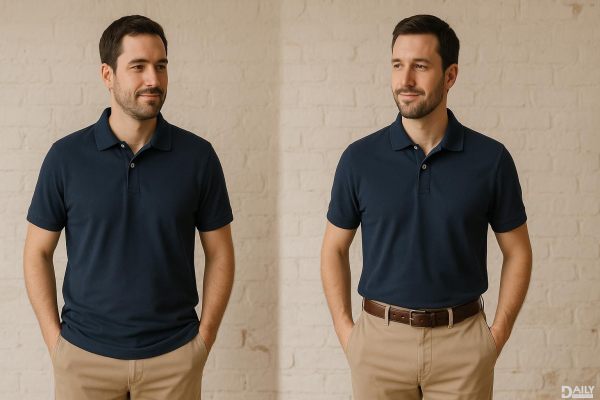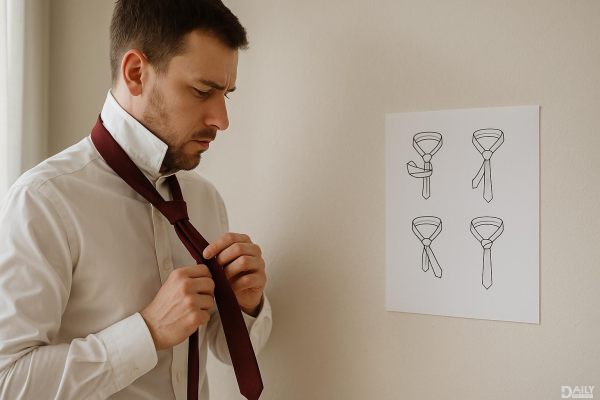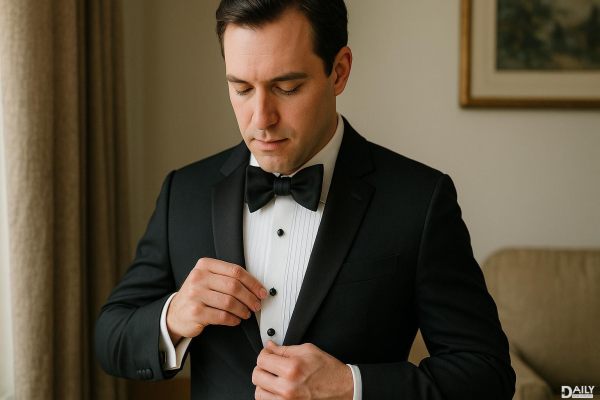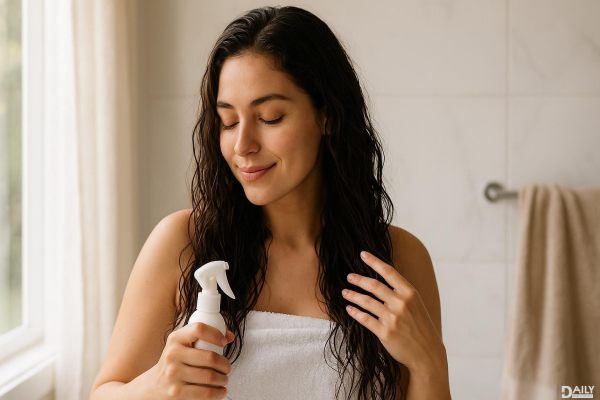Getting a suit that fits just right is like finding the perfect slice of pizza—it should feel tailor-made for you, not like something you grabbed off the rack and hoped for the best. A well-fitted suit can make you look sharp, confident, and put-together, while a poorly fitted one can make even the most expensive fabric look like a hand-me-down. So, let’s break down exactly how a suit should fit and the common mistakes you should avoid to nail that polished, professional look.

If the shoulders don’t fit, nothing else matters. A suit jacket should sit smoothly across your shoulders without any bunching or pulling. The seam where the sleeve meets the body of the jacket should align right at the edge of your natural shoulder—not hanging over or sitting too far in. If the shoulders are too tight, you’ll look like you’re borrowing your little brother’s blazer. Too loose, and you’ll drown in fabric, losing any sense of structure. Pro tip: If the shoulders don’t fit off the rack, walk away. Altering shoulders is expensive and often not worth the hassle.
Ever seen a guy in a suit jacket that barely covers his belt? Yeah, don’t be that guy. A well-fitted jacket should end around the middle of your backside—long enough to cover your rear but not so long that it looks like a trench coat. A quick test: Cup your hands under the jacket’s hem—if your fingers just graze the bottom, the length is probably right. Too short, and you risk looking like you outgrew it. Too long, and you’ll lose the sleek silhouette that makes a suit look sharp.
Your shirt sleeves should peek out from under your jacket sleeves by about half an inch—just enough to show a sliver of cuff. If your jacket sleeves are too long, you’ll look sloppy. Too short, and you’ll give off "I borrowed this from my dad" vibes. The jacket sleeve should end right where your wrist meets your hand, allowing that perfect flash of shirt cuff when you move. Bonus tip: If you’re wearing a watch, make sure it doesn’t get swallowed up by the sleeve.
A suit jacket should have some shape—not boxy, not skin-tight. The sides should taper slightly inward to give you a defined waist without looking like you’re being squeezed into a corset. If the jacket pulls when buttoned (creating an "X" shape at the button), it’s too tight. If it hangs like a sack, it’s too loose. A well-tailored jacket will follow your natural contours without restricting movement. Remember, you should be able to comfortably button it without feeling like you’re holding your breath.
Too many guys focus on the jacket and forget the pants, but ill-fitting trousers can ruin the whole look. The waist should sit comfortably at your natural waistline—no sagging, no muffin top. The break (where the pants meet your shoes) should be slight—just a small fold at the front, not a puddle of fabric. Slim or tapered cuts are modern and clean, but avoid anything so tight it looks like you’re wearing leggings. And please, no pleats unless you’re going for a vintage vibe (and even then, tread carefully).
Ever seen a guy whose jacket collar floats above his shirt collar like a poorly fitted cape? That’s the dreaded collar gap, and it’s a dead giveaway of a bad fit. The jacket collar should hug your shirt collar snugly with no visible space in between. If there’s a gap, the jacket either doesn’t fit right or wasn’t designed for your neck shape. This is one of those small details that separates a sharp suit from a sloppy one.
The top button of a two-button suit (or middle button of a three-button) should sit at or just above your natural waist—not too high, not too low. If it’s too high, you’ll look like you’re wearing a costume. Too low, and the jacket will look boxy and unflattering. The button stance affects the overall balance of the jacket, so pay attention to where it hits your torso. And remember: Always leave the bottom button undone—it’s a style rule that’s been around since King Edward VII couldn’t button his jacket over his belly.
A great suit isn’t about the brand or the price tag—it’s about how it fits you. Even a budget suit that’s properly tailored will look better than a designer one that hangs like a potato sack. If you’re buying off the rack, focus on the shoulders and chest first—those are the hardest to alter. Everything else (sleeves, waist, pants) can usually be adjusted by a good tailor. And if you’re investing in a custom suit, communicate clearly with your tailor about how you want it to fit. At the end of the day, the perfect suit should make you feel like the best version of yourself—confident, comfortable, and ready to take on the world.
























